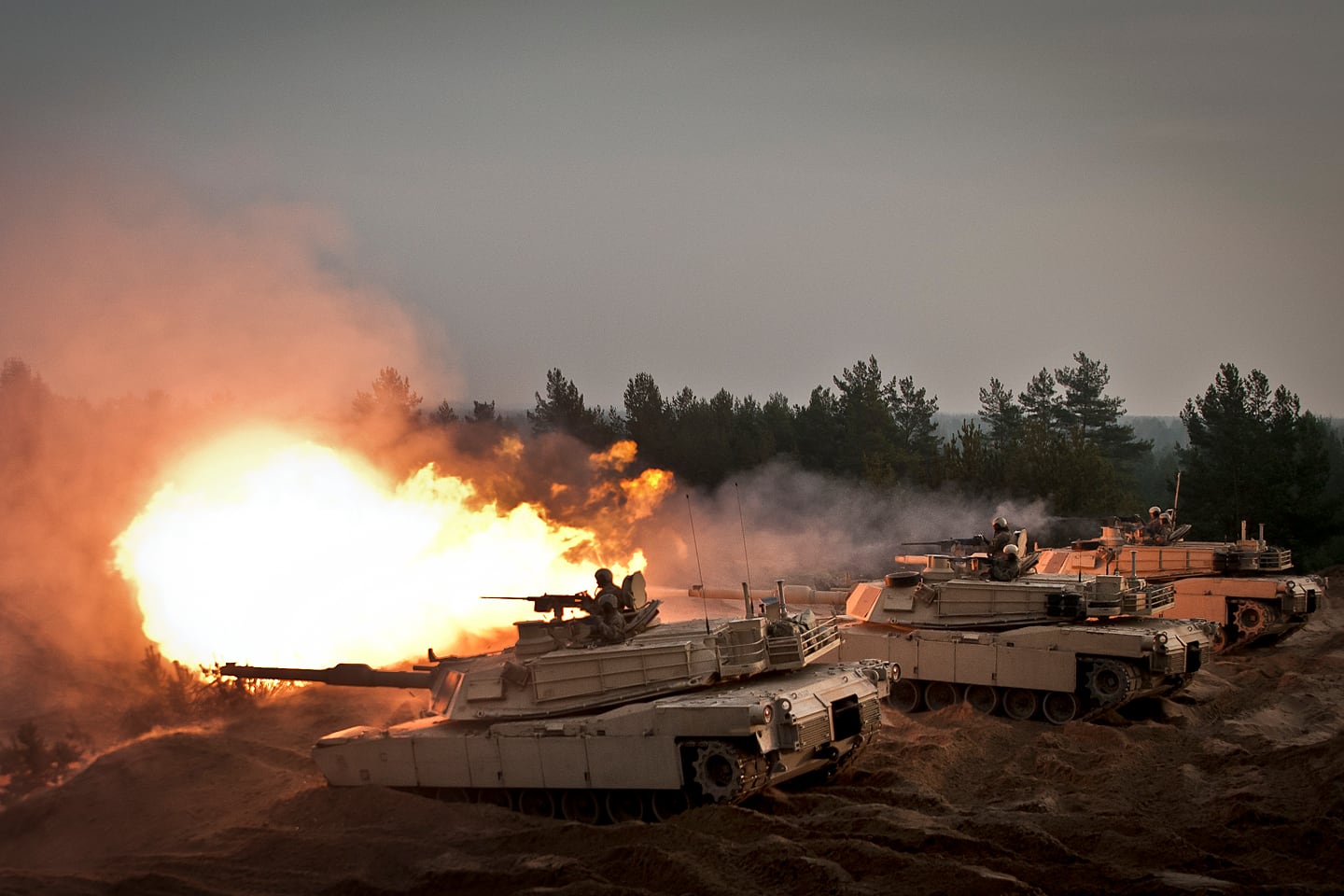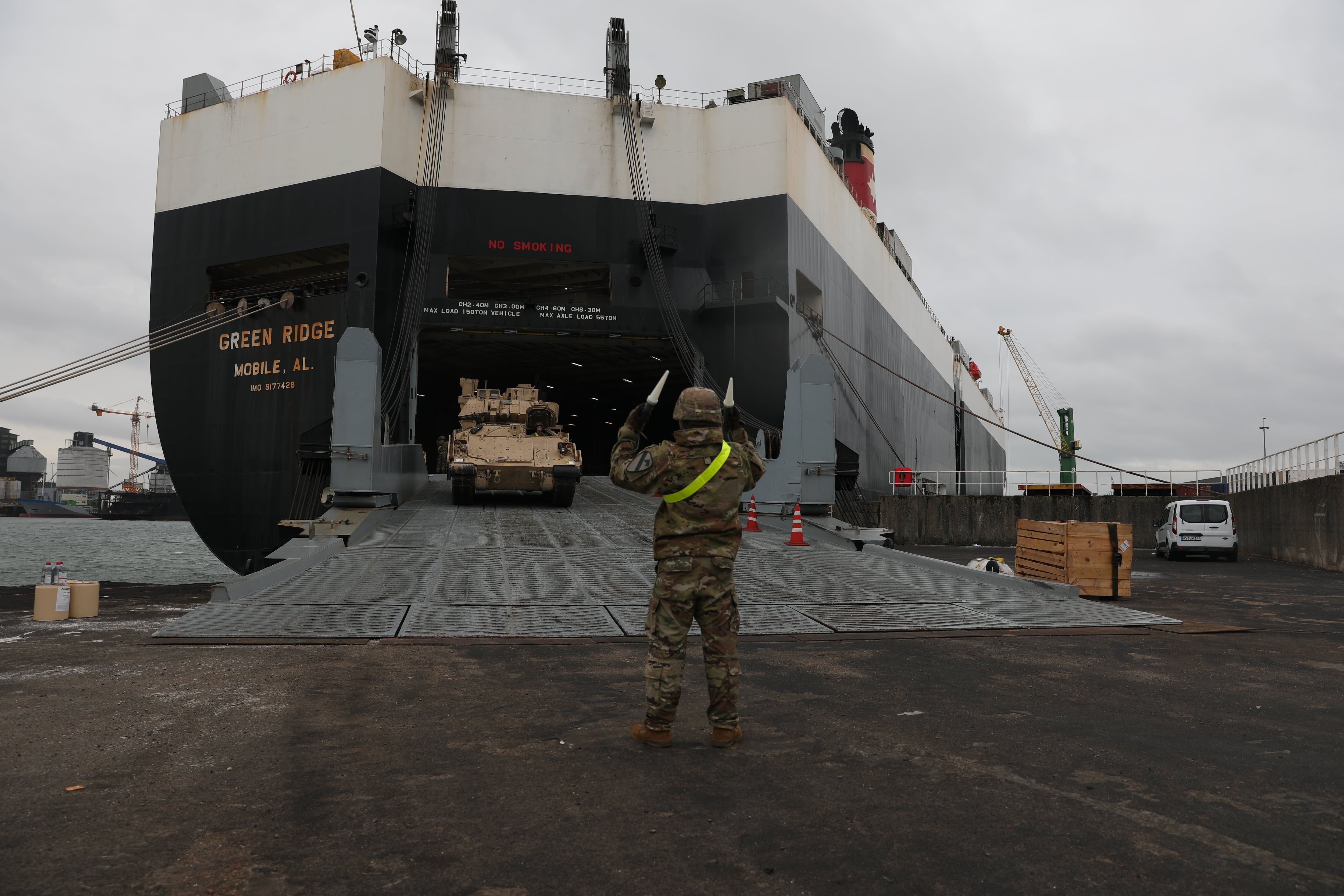Soldiers no longer have the luxury of deploying to a war zone and falling in on equipment already in place.
Instead, they’re going to be expected to learn some skills not found in their manuals, according to Maj. Gen. Steven Shapiro, who helms Army Sustainment Command.
“They’re learning how to tie down tanks; They’re learning how to convoy across a continent,” Shapiro said Monday at an Association of the U.S. Army panel. "That’s a level of readiness they don’t get sitting on their installation.”
Army leaders will have to change how they plan to move their forces as well.
“Flattening out your footprint and having resiliency in your plan," Shapiro said. "If you lose a rail line, there’s three or four more rail lines, if you lose a route, there’s three or four more routes.”
The changes are part of the Army’s effort to prime its units and the theaters they deploy to for division-level exercises like Defender 2020 in Europe this spring, as well as potential real-world conflicts with great power rivals like China and Russia.
RELATED

One big focus is installation readiness, which means taking a look at the railheads and railroads leading out of Army bases and towards coastal seaports.
If the Army were to deploy at-scale for a major conflict, about 70 percent of its troops and equipment will have to go from fort to port by rail, according to Maj. Gen. Stephen E. Farmen, who leads the Army service component of U.S. Transportation Command.
“That’s a big number," Farmen said. "So our ability to work with all the Class I railroads in CONUS in order to do that is really, really important.”
Seaports also must be tested and, most likely, defended.
“We’re pressure testing all the ports on our coasts,” Farmen said. “We’re doing the same thing in Europe, we’re doing it in the Middle East and the Pacific.”

Sleeper cells and insider attacks are always threats to the United States’ transportation infrastructure. But Farmen’s command is most concerned about the vulnerabilities that cyber attacks seek to exploit.
Such a scenario was seen during the June 2017 malware attack that hit Copenhagen-based shipping firm A.P. Moller Maersk. The attack, which was ultimately blamed on Russia, paralyzed Maersk’s operations, one of the largest container ship operators in the world, and cost the firm up to $300 million.
Right now, the Army is testing those vulnerabilities and working with the Department of Homeland Security to close gaps, Farmen said. Part of testing both railways and ports involves pushing soldiers and their gear through the motions of rapid deployment exercises.
The 1st Cavalry Division’s 2nd Armored Brigade Combat Team just went from Fort Hood, Texas, to the port of Jacksonville, Florida, to Europe. On Oct. 10, they became the first unit in recent memory to utilize the Port of Vlissingen, Netherlands, according to an Army press release.
“I just got an update this morning,” Farmen said regarding the brigade’s movement. "The intent was to do it in 44 days; we think we’re going to get it in around 40.”
Cargo ships are bringing roughly 3,500 soldiers, 85 tanks, 120 Bradley fighting vehicles, 15 Paladins, 500 tracked vehicles, 1,200 wheeled vehicles and other pieces of equipment onto the European continent for the 2nd ABCT’s winter rotation to Europe.
The Port of Vlissingen is only the first juncture for the 2nd ABCT’s deployment. Throughout October, their troops will be streaming in through ports in Poland, Latvia, Belgium, Greece and Romania, according to the Army release.
Stateside locations like the Military Ocean Terminal Sunny Point and the Military Ocean Terminal Concord also serve as “two crown jewels" that “distribute ammunition globally," Farmen said. They are equipped to safely transport containerized ammunition across the Atlantic and Pacific oceans.
But the Army can’t wait for a conflict to bring ammunition overseas, and so it’s also taking a hard look at its munitions readiness, making sure there are enough munitions available in the United States for deploying forces, as well as enough in stockpiles when units make it to a theater of operations.
Right now, the Army is funded through 2020 and 2021 to modernize its pre-positioned stocks throughout the world, which provide soldiers enough support until air and sea lines of communication are established in the event of war, according to Shapiro.
Kyle Rempfer was an editor and reporter who has covered combat operations, criminal cases, foreign military assistance and training accidents. Before entering journalism, Kyle served in U.S. Air Force Special Tactics and deployed in 2014 to Paktika Province, Afghanistan, and Baghdad, Iraq.




